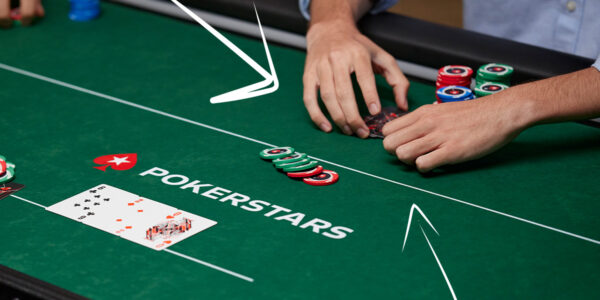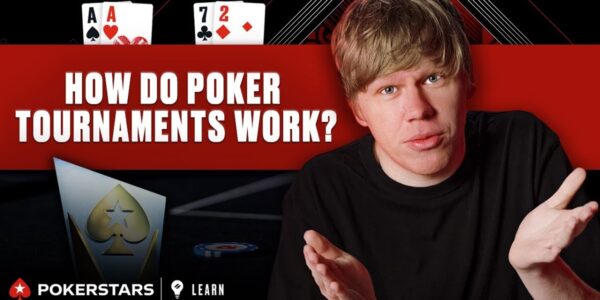Battling Out of the Micro-Stakes – Part 1
Running over ABC Regulars
Today we kick off a new series. In this practical collection of articles, I hope to give you guys some simple and effective steps for fighting your way out of 2NL-25NL cash games (Zoom or Regular) as quickly as possible, entering the realm of low stakes where some more meaningful money can be made. Today we learn how to throw our tight opponents under the sledgehammer of aggression. There are typically two broad player types in a game like 10NL Zoom: recreational players who call too much and regulars who fold too much. Our focus here is on how to exploit the latter.


Get with the Times!
I remember when the only advice beginners ever received was along the lines of:
- Play ABC
- Don’t bluff at the microstakes
- Get value with your good hands
- Let them beat themselves
And so on.
These days, there are less completely mindless calling stations around. Poker knowledge has evolved and become more mainstream meaning that even the not so serious players cannot help but get some form of passive education. The globalisation of poker knowledge leads to a basic competence, which renders a tight ABC strategy ineffective. If we follow the old adage of ‘tight is right’, we end up folding far too often to stay afloat because there are less donations available today than there were a decade ago. In a 6-max game, we pay a blind one third of the time. This so the money must be recouped via aggression.
Fortunately, many players at the micro stakes are still proponents of a nitty post-flop strategy. In the 10NL ZOOM pool for example, there is very little triple barrel bluffing, flop check/raising, 4-bet bluffing, or protecting of checking ranges. Therefore, the best general way to play against a tight ABC regular is to triple barrel a lot, check/raise a lot, 4-bet bluff vs. loose 3-bettors, and attack checking ranges.
Aggression facilitates winning many small pots and these keep you afloat so that the donations that come your way equate to profit. When you do encounter the bluffing maniac or the hopeless calling station, you are already in a good spot from your constant harrying of the regular side of the pool. Aggressive players do not rely on gifts to break even; they are already winners before a bad player spews a stack onto their lap. Donations become bonuses, not daily bread!


What is Running Someone Over?
Running someone over means using aggression to cause them to overfold their range – in other words, to make them fold more hands than a theoretical strategy would demand.
In fact, a 25NL regular naturally tends to fold far more of his range than he should. Let’s take a classic example where 90% of micro-stakes regulars fail to reach an adequate calling frequency.
In a 25NL game, you open in the HJ with Q♣ 10♣ to 2.5BB and only the big blind calls. He is your typical micro-stakes grinder – cautious and tighter than he should be. The flop comes K♥ J♠ 4♣ and Villain checks to you. You bet around 33% of the pot. Villain calls and the turn is the 3♦ . He checks again. The pot is now 8BB and this time you go for a large bet of 13BB. This is a great way to apply pressure to Villain’s range. He has a lot of weak top pair and second pair in his range at this point. He thinks for a little while and then calls.
The river brings the 3♠ and once again Villain checks. In theory it would not be wrong to bluff with this hand, but in practice it is even more lucrative. You have blockers to some of Villain’s better top pair and most two pair and sets were incentivised to raise the flop vs. your small bet. Villain’s range is capped – it cannot contain too many big hands; meanwhile you can have all of the nutted stuff. The pot is now 34BB. What will happen if you go all in for the remaining 83BB? Will Villain ever call? Most 25NL players who do not have a read on you, will end up folding close to 100% of their range now. Sometimes they will have slow-played 44 on the flop and you’ll get looked up, but this is a very rare occurrence.
Your bet needs to work 83 / (83 + 34) = 71% of the time. In reality it will work a good deal more than this. When Villain folds 90% of his range here he is being run over.
Unfamiliarity Theory
One reason why you caused your tight opponent to fold so ridiculously often to your river bet was that he was startled by a line he almost never sees at these stakes. It is in fact a very good idea in theory to shove for 2.5x the pot when your range contains far more nutted hands than your opponent’s. People don’t implement this at the micro-stakes, however, and so your shove is an alien line from an alien world. When tighter players see such unfamiliar aggression, their natural reaction is to fold. When their range contains few hands better than one pair, almost all of it hits the muck.


Unfamiliarity Theory is the idea that less seen lines will induce more mistakes than common lines. Villain folds too often here because he has no experience with hitting the correct defence frequency against such a bet.
When to Reign it in
We cannot just go rampaging unselectively with over-bets. We should calm down the aggression in the following situations:
- Against wild players or calling stations.
- On cards that uncap our opponent’s range (like flush or straight cards).
- Against strong lines like turn raises and 4-bets.
- When we have extensive history with a player and a bluffy image.
Other than that, aggression gets the green light.
The way to beat tight passive players is to force them to fold too often. It’s time we started running over all of these players who stick to the 2010 principle of ‘tight is right.’














